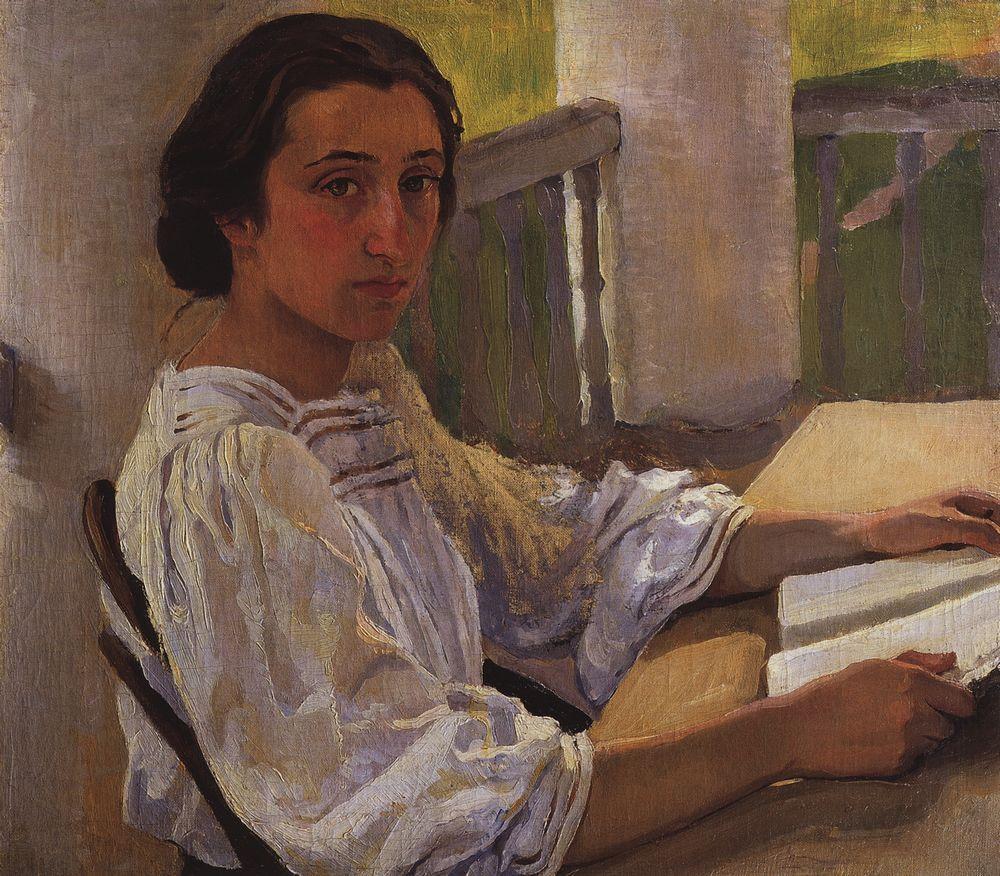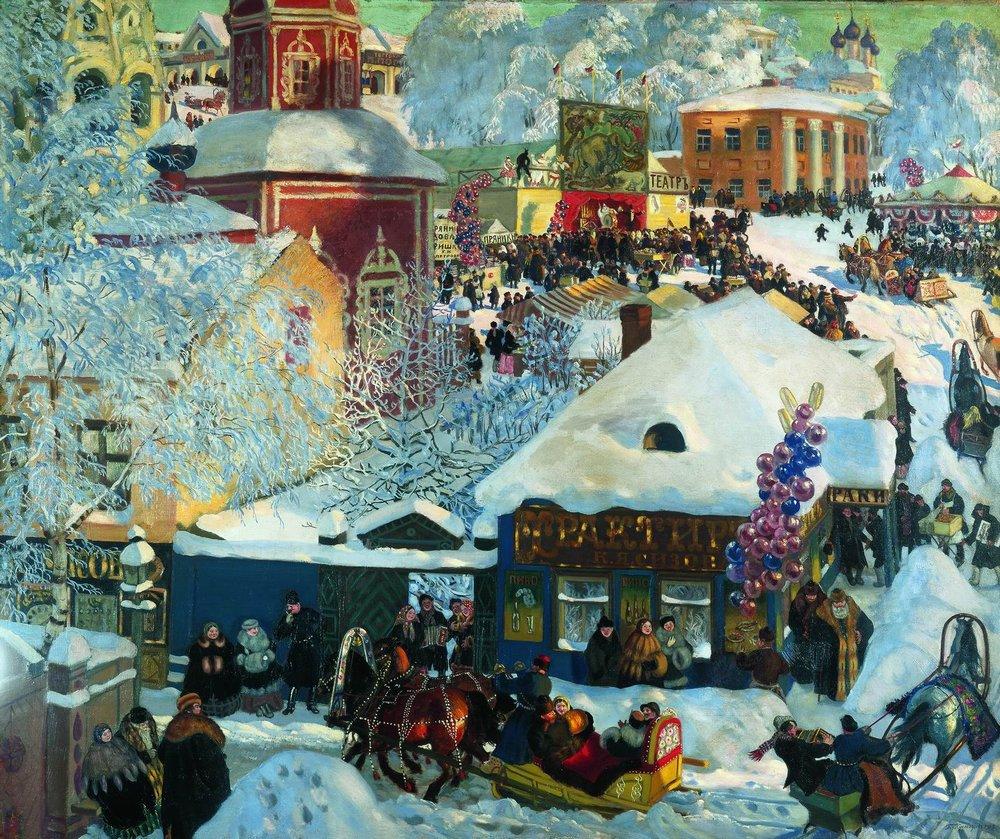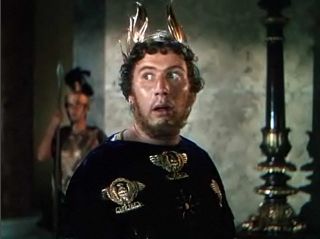|
Zinaida Serebriakova
Zinaida Yevgenyevna Serebriakova (russian: Зинаида Евгеньевна Серебрякова; – 20 September 1967) was a Russian and later French painter. Family Zinaida Serebryakova was born on the estate of Neskuchnoye near Kharkov (now Kharkiv, Ukraine) into the artistic Benois family in the Russian Empire. Her father, Evgenii Lansere, was a sculptor and her mother, Ekaterina Lansere, was a painter. Her grandfather, Nicholas Benois, was a prominent architect, chairman of the Society of Architects and member of the Russian Academy of Science. Her uncle, Alexandre Benois, was a painter, founder of the ''Mir iskusstva'' art group. One of Zinaida's brothers, Nikolay Lanceray, was an architect, and her other brother, Yevgeny Yevgenyevich Lanceray, had an important place in Russian and Soviet art as a master of monumental painting and graphic art. The English actor and writer Peter Ustinov was also related to her. Youth In 1900, she graduated from a women's gym ... [...More Info...] [...Related Items...] OR: [Wikipedia] [Google] [Baidu] |
At The Dressing-Table
''At the Dressing-Table. Self-Portrait'' (russian: За туалетом. Автопортрет) is a 1909 painting by Ukranian-French painter Zinaida Serebriakova. The painting is in the collection of the Tretyakov Gallery in Moscow. Its size is 75 × 65 cm. ''At the Dressing-Table'' was executed by Serebriakova in 1909 while she was living near Neskuchnoye, Kursk Governorate (now is a part of Kharkiv Oblast of Ukraine). According to Serebriakova, the winter came early in that year, there was a lot of snow, but it was warm in the house, so "she started to paint herself in the mirror, entertaining by drawing different small things from her dressing-table". On the insistence of Eugene Lanceray, her brother, Serebriakova sent ''At the Dressing-Table'' to Saint-Petersburg. It was exhibited at the 7th exhibition of the Union of Russian Artists, which moved from Moscow in the beginning of 1910. The painting was well received by the public and art critics. The painter Valentin Sero ... [...More Info...] [...Related Items...] OR: [Wikipedia] [Google] [Baidu] |
Alexandre Benois
Alexandre Nikolayevich Benois (russian: Алекса́ндр Никола́евич Бенуа́, also spelled Alexander Benois; ,Salmina-Haskell, Larissa. ''Russian Paintings and Drawings in the Ashmolean Museum''. pp. 15, 23-24. Published by Ashmolean Museum, 1989 Saint Petersburg9 February 1960, Paris) was a Russian artist, art critic, historian, preservationist and founding member of ''Mir iskusstva'' (World of Art), an art movement and magazine.Owen, Bobbi. ''Costume Design on Broadway: Designers and Their Credits, 1915-1985''. p. 19 Greenwood Press: New York, 1987 As a designer for the Ballets Russes under Sergei Diaghilev, Benois exerted what is considered a seminal influence on the modern ballet and stage design. Early life and education Alexandre was born into the artistic and intellectual Benois family, prominent members of the 19th- and early 20th-century Russian intelligentsia. His mother Camilla (Russian: Камилла Альбертовна Кавос, and then ... [...More Info...] [...Related Items...] OR: [Wikipedia] [Google] [Baidu] |
Mstislav Dobuzhinsky
Mstislav Valerianovich Dobuzhinsky or Dobujinsky ( lt, Mstislavas Dobužinskis, August 14, 1875, Novgorod – November 20, 1957, New York City) was a Russian and Lithuanian artist noted for his cityscapes conveying the explosive growth and decay of the early twentieth-century city. Of noble Lithuanian extraction, Dobuzhinsky was born on August 14, 1875 in Novgorod into the family of an army officer. From 1885 to 1887, he attended the Drawing School of the Society for the Promotion of the Artists. Between 1895 and 1899, he read Law at the University of St. Petersburg, simultaneously studying in private studios. After graduating from the University, he was trained from 1899 to 1901 by Anton Ažbe in Munich and Simon Hollósy in Nagybánya (Austria-Hungary). In Munich, he came to be influenced by the Jugendstil. On his return to Russia, he joined the Mir Iskusstva, an artistic circle which idealized the 18th century as the "age of elegance". Dobuzhinsky was distinguished from other ... [...More Info...] [...Related Items...] OR: [Wikipedia] [Google] [Baidu] |
Boris Kustodiev
Boris Mikhaylovich Kustodiev (russian: Бори́с Миха́йлович Кусто́диев; – 28 May 1927) was a Russian and Soviet painter and stage designer. Early life Boris Kustodiev was born in Astrakhan into the family of a professor of philosophy, history of literature, and logic at the local theological seminary. His father died young, and all financial and material burdens fell on his mother's shoulders. The Kustodiev family rented a small wing in a rich merchant's house. It was there that the boy's first impressions were formed of the way of life of the provincial merchant class. The artist later wrote, "The whole tenor of the rich and plentiful merchant way of life was there right under my nose... It was like something out of an Ostrovsky play." The artist retained these childhood observations for years, recreating them later in oils and water-colours. Art studies Between 1893 and 1896, Kustodiev studied in theological seminary and took private art lessons ... [...More Info...] [...Related Items...] OR: [Wikipedia] [Google] [Baidu] |
Moscow Kazanskaya Railway Station
Kazansky railway terminal (russian: Каза́нский вокза́л, ''Kazansky vokzal'') also known as Moscow Kazansky railway station (russian: Москва́-Каза́нская, ''Moskva-Kazanskaya'') is one of nine railway terminals in Moscow, situated on the Komsomolskaya Square, across the square from the Leningradsky and Yaroslavsky stations. Kazansky station primarily serves two major railway lines radiating from Moscow: the eastbound one, to Kazan, Yekaterinburg, and points beyond (one of the routes of the Trans-Siberian Railway), and the south-east-bound one, to Ryazan. After Ryazan, the south-eastern line branches a number of times, so that trains originating from Kazansky station serve most of south-eastern Russia, Kazakhstan, and the post-Soviet Central Asian states (mostly via the Trans-Aral line). Commuter trains serving these two directions use Kazansky station as well. Occasionally, long-distance trains serving the eastbound Moscow-Nizhny Novgorod line ... [...More Info...] [...Related Items...] OR: [Wikipedia] [Google] [Baidu] |
Tretyakov Gallery
The State Tretyakov Gallery (russian: Государственная Третьяковская Галерея, ''Gosudarstvennaya Tretyâkovskaya Galereya''; abbreviated ГТГ, ''GTG'') is an art gallery in Moscow, Russia, which is considered the foremost depository of Russian fine art in the world. The gallery's history starts in 1856 when the Moscow merchant Pavel Mikhailovich Tretyakov acquired works by Russian artists of his day with the aim of creating a collection, which might later grow into a museum of national art. In 1892, Tretyakov presented his already famous collection of approximately 2,000 works (1,362 paintings, 526 drawings, and 9 sculptures) to the Russian nation. The museum attracted 894,374 (visitors in 2020 (down 68 percent from 2019), due to the COVID-19 pandemic. It was 13th on the list of most-visited art museums in the world in 2020. The façade of the gallery building was designed by the painter Viktor Vasnetsov in a peculiar Russian fairy-tale style. ... [...More Info...] [...Related Items...] OR: [Wikipedia] [Google] [Baidu] |
Zinaida Serebryakova - Self-portrait As Piero (1911)
Zenaida (Greek name meaning "Life of Zeus.") Zenaide (Italian), Zénaïde ( French), or Zinaida (russian: Зинаида). /ref> It is a personal name used in many cultures used for women. It can also refer (as ''Zenaida'') to the , named after Princess Zénaïde Bonaparte. [...More Info...] [...Related Items...] OR: [Wikipedia] [Google] [Baidu] |
Serebryakova Harvest 1915
Serebryakov or Serebriakov (russian: Серебряков) is a Russian masculine surname originating from the word ''serebryak'', meaning ''silversmith''; its feminine counterpart is Serebryakova or Serebriakova. Notable persons with the surname include: * Aleksei Serebryakov (other), multiple persons * Alexander Serebryakov (born 1987), Russian cyclist * Boris Serebryakov (1941–1971), Soviet serial killer * Daria Serebriakova (born 1995), Russian badminton player *Esper Serebryakov (1854–1921), director of the Russian-language newspaper '' Nakanune'' *Galina Serebryakova (1905–1980), Polish-Russian writer * I. D. Serebryakov (1917–1998), Russian lexicographer and translator * Lazar Serebryakov (1795–1862), Russian admiral *Leonid Serebryakov (1890–1937), Soviet politician * Maria Serebriakova (born 1965), Russian artist *Nikolay Serebryakov (1928–2005), Soviet and Russian director of animated films * Pavel Serebryakov (1909–1977), Russian pianist *Zinaida ... [...More Info...] [...Related Items...] OR: [Wikipedia] [Google] [Baidu] |
Portrait
A portrait is a portrait painting, painting, portrait photography, photograph, sculpture, or other artistic representation of a person, in which the face and its expressions are predominant. The intent is to display the likeness, Personality type, personality, and even the mood of the person. For this reason, in photography a portrait is generally not a Snapshot (photography), snapshot, but a composed image of a person in a still position. A portrait often shows a person looking directly at the painter or photographer, in order to most successfully engage the subject with the viewer. History Prehistorical portraiture Plastered human skulls were reconstructed human skulls that were made in the ancient Levant between 9000 and 6000 BC in the Pre-Pottery Neolithic B period. They represent some of the oldest forms of art in the Middle East and demonstrate that the prehistoric population took great care in burying their ancestors below their homes. The skulls denote some of the earlie ... [...More Info...] [...Related Items...] OR: [Wikipedia] [Google] [Baidu] |
Princess Maria Tenisheva
Maria Klavdievna Tenisheva (née Pyatkovskaya, in the first marriage - Nikolaeva, (20 May 1858 – 14 April 1928) was a Russian Princess, artist, educator, philanthropist and collector. She was born May 20, 1858, in St. Petersburg. Maria Tenisheva is famous as the founder of the Art studio in St. Petersburg, and the Drawing School at the Museum of Russian antiquity in Smolensk, handicraft college in Bezhitsa town, as well as by artistic and industrial workshops held in her own estate of Talashkino. Biography Maria Pyatkovskaya was born on May 20, (June 1) 1858 in St. Petersburg. The girl was illegitimate, and grew up in her stepfather's wealthy house; she was quite a shy girl, despite many governesses, nurses and teachers present in the house. Little Maria was expected to be obedient and restraint. His mother was cold to her, apparently binding to this child the moments of her life which she was trying to forget. When 16-year-old Maria graduated from private school, Rafail Nikola ... [...More Info...] [...Related Items...] OR: [Wikipedia] [Google] [Baidu] |
Gymnasium (school)
''Gymnasium'' (and variations of the word) is a term in various European languages for a secondary school that prepares students for higher education at a university. It is comparable to the US English term '' preparatory high school''. Before the 20th century, the gymnasium system was a widespread feature of educational systems throughout many European countries. The word (), from Greek () 'naked' or 'nude', was first used in Ancient Greece, in the sense of a place for both physical and intellectual education of young men. The latter meaning of a place of intellectual education persisted in many European languages (including Albanian, Bulgarian, Estonian, Greek, German, Hungarian, the Scandinavian languages, Dutch, Polish, Czech, Serbo-Croatian, Macedonian, Slovak, Slovenian and Russian), whereas in other languages, like English (''gymnasium'', ''gym'') and Spanish (''gimnasio''), the former meaning of a place for physical education was retained. School structure Be ... [...More Info...] [...Related Items...] OR: [Wikipedia] [Google] [Baidu] |
Peter Ustinov
Sir Peter Alexander Ustinov (born Peter Alexander Freiherr von Ustinov ; 16 April 192128 March 2004) was a British actor, filmmaker and writer. An internationally known raconteur, he was a fixture on television talk shows and lecture circuits for much of his career. An intellectual and diplomat, he held various academic posts and served as a goodwill ambassador for UNICEF and president of the World Federalist Movement. Ustinov was the winner of numerous awards during his life, including two Academy Awards for Best Supporting Actor, Emmy Awards, Golden Globes, and BAFTA Awards for acting, and a Grammy Award for best recording for children, as well as the recipient of governmental honours from, amongst others, the United Kingdom, France, and Germany. He also displayed a unique cultural versatility which frequently earned him the accolade of a Renaissance man. Miklós Rózsa, composer of the music for ''Quo Vadis'' and of numerous concert works, dedicated his String Quartet No. 1 ... [...More Info...] [...Related Items...] OR: [Wikipedia] [Google] [Baidu] |






.jpg)
